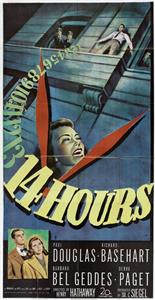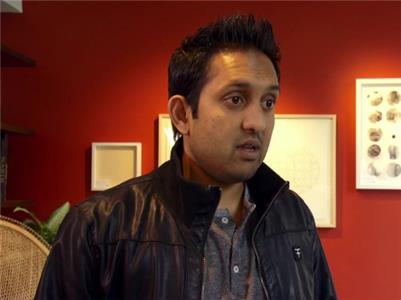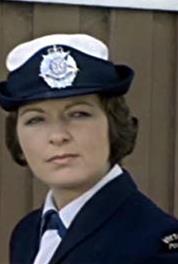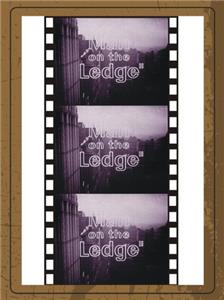Fourteen Hours (1951) Online

A young man, morally destroyed by his parents not loving him and by the fear of being not capable to make his girlfriend happy, rises on the ledge of a building with the intention of committing suicide. A policeman makes every effort to argue him out of that.
| Complete credited cast: | |||
| Paul Douglas | - | Police Officer Charlie Dunnigan | |
| Richard Basehart | - | Robert Cosick | |
| Barbara Bel Geddes | - | Virginia Foster | |
| Debra Paget | - | Ruth | |
| Agnes Moorehead | - | Christine Hill Cosick | |
| Robert Keith | - | Paul E. Cosick | |
| Howard Da Silva | - | Deputy Police Chief Moskar (as Howard da Silva) | |
| Jeffrey Hunter | - | Danny Klempner | |
| Martin Gabel | - | Dr. Strauss | |
| Grace Kelly | - | Mrs. Louise Ann Fuller | |
| Frank Faylen | - | Room Service Waiter | |
| Jeff Corey | - | Police Sgt. Farley | |
| James Millican | - | Police Sgt. Boyle | |
| Donald Randolph | - | Dr. Benson |
Film debut of Grace Kelly.
This film is based on a real-life incident which happened July 26, 1938, in New York City. John W. Warde, 26, leaped 17 floors to his death from the ledge outside a room in the Hotel Gotham.
The film was shelved for six months because the daughter of Fox exec Spyros Skouras leaped to her death on the very day the film was previewed. By the time of its eventual release, some Spyros-mandated compromises were made to the film's storyline.
A nonprofessional performer named Richard Lacovara doubled for Richard Basehart in long shots on the ledge, which had been enlarged to minimize the risk of falling. Lacovara was protected by a canvas life belt hidden under his costume, connected to a lifeline, Even with the double, Basehart still had to endure over 300 hours of standing on the ledge with little movement during the 50 days of shooting in New York, even though he had a sprained ankle and his legs were ravaged by poison oak contracted on the grounds of his Coldwater Canyon home.
The building used was demolished in 1967. It was replaced by the 52-story tower 140 Broadway, noted for its large red cube in the plaza.
Except for brief scoring under the main titles and at the film's conclusion, the film has no music.
Producer Sol C. Siegel won permission from the New York Police Department to rope off a large section of downtown New York as one extensive set.
Richard Basehart's performance impressed Federico Fellini, who subsequently cast him in La Strada (1954).
Richard Basehart's wife, costume designer Stephanie Klein, was diagnosed with a brain tumour during filming in May and June 1950, and died following brain surgery during production of the film that July.
A number of character actors in this film who had been associated with or accused of associating with left-wing political groups or causes, or even communist groups or causes, such as Howard Da Silva, Martin Gabel, Jeff Corey, Leif Erickson and John Randolph, were soon to be called before the House Un-American Activities Committee to testify about supposed "Communist infiltration of Hollywood", or were listed in the anti-communist publication Red Channels, which was used to blacklist "suspect" actors, writers and producers. Most were blacklisted and did not appear again in films for many years; one (Erickson, who had been married to Frances Farmer) named names and was cleared.
Grace Kelly beat out Anne Bancroft for the role of Mrs. Louise Ann Fuller.
Howard Hawks refused to direct this movie because of its subject matter.
As was typical of other big studio films of the time, the exterior action photographed on location on the streets of New York City, but the dialogue scenes were shot on a copy of the building and on studio sets at the Fox Studios in Hollywood. The film is notable in that a number of actors just beginning their careers who were soon to go on to major roles in theater and film were cast in bit parts or as extras, among them: Joyce Van Patten, Janice Rule, John Randolph, Harvey Lembeck, Brian Keith, Richard Beymer, David Burns, Ossie Davis, John Cassavetes and Grace Kelly, in her first screen appearance.
The working title was "The Man on the Ledge". The studio changed it after John William Warde's mother requested that it change the title so that the picture would not be as closely identified with her son. Darryl F. Zanuck speculated that they would have to change the film's locale to Chicago or Philadelphia to further distance it from the Warde suicide, but the released film is set in New York.
Grace Kelly was noticed during a visit to the set by Gary Cooper, who subsequently starred with her in High Noon (1952). Cooper was charmed by Kelly and said that she was "different from all these sexballs we've been seeing so much of." However, her performance was not noticed by critics, and did not lead to her receiving other film acting roles. She returned to television and stage work after her performance in the film.
Henry Hathaway avoided stasis by cutting between the film ledge and the reaction of the crowd below, and by adroit use of camera angles.
Two New York City landmarks can be seen in the background in scenes filmed from the ledge: The Woolworth Building and the Old Trinity Church.
The studio purchased Joel Sayre's story as a vehicle for Richard Widmark, who was to play Robert Cosick.
Robert Wagner was originally set for the role of Danny, but was replaced by Jeffrey Hunter in his film debut.
The production used a real bank building in New York (The Guaranty Trust Co.) and planned to film all of the outdoor crowd scenes over Memorial Day weekend. However, the ledge on the bank building turned out to be too narrow, so an extension was built (12 inches deep, 42 feet wide)) and filming ended up taking two weeks. The entire bank building was dressed with curtains, a new entrance canopy, metal nameplates and a marquee. The replica of the hotel ledge that was built on Fox's Stage 8 cost $32,000.
This marked the return to the screen of Broadway actor George MacQuarrie, who had not appeared in a film since This Land Is Mine (1943).
On March 23, 1953, Paul Douglas reprised his role for a "Lux Radio Theatre" broadcast of the story, which co-starred Terry Moore and Marvin Bryan.
Film debut of John Cassavetes.
Mentioned by blacklisted actor Howard Da Silva in an episode of Pantomime Quiz (1957) with Walter Brennan and Vincent Price, this was his last film or TV appearance until Play of the Week: Thieves Carnival (1959).
Howard Hawks wanted to cast Cary Grant as Robert Cosick.
The film was made in just six weeks with a modest budget.
Although the Twentieth Century-Fox Produced Scripts Collection, also located at UCLA, contains drafts of the film's screenplay written by Arnaud d'Usseau and James Gow, their work was not used in the final film. Joel Sayre, the author of the magazine story, also worked on treatments for the film, but his screenplay work was not incorporated in the completed picture.
Richard Basehart's character is repeatedly referred to as young and a kid, yet the actor, born in 1914, was 37 when the film came out. Playing his mother, Agnes Moorehead, born in December of 1900, wasn't even 14 when Basehart was born. Robert Keith, who played Basehart's father, was only 16 years old when Basehart was born.
Barbara Bel Geddes didn't appear in another film until Vertigo (1958).
Film debut of Joyce Van Patten.
Film debut of Jeffrey Hunter.
Richard Basehart performed with a spranged ankle and poison oak which he got when he was so distraught with grief over the death of his then first wife Stephanie Kline of a malignant brain tumor. He went home and chopped down a tree and in the process spranged his ankle and acquired poison oak. He was so restricted standing on the ledge that he had to rely on facial expressions more than anything. This practice became evident with his performances in later years. Some have said his expressions are so changeable that it's like he's a camellian. Basehart had a reputation for playing the crazy, psycho, maniacal characters during the early years of his career. He was top notch in this respect.
At approximately 41:05 when Robert looses his balance and falls to the ledge an outline on both knees can be seen that may indicate knee pads to protect him from the hard concrete ledge. Less likely are bandages to protect Richard Basehart from further irritation from his poison oak exposure while working at his home.





User reviews